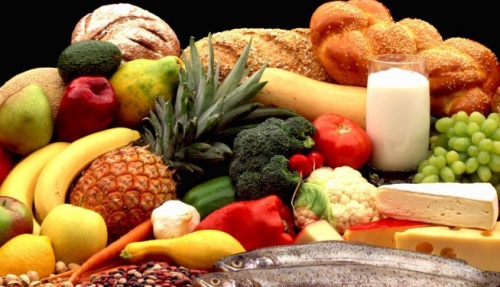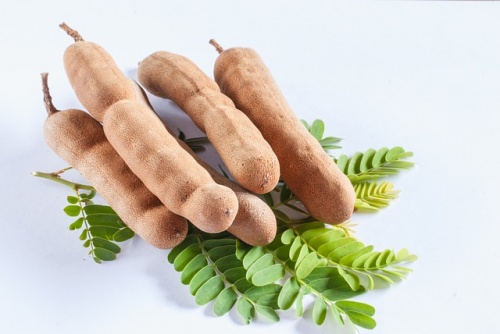How Should I Eat During Pregnancy?

Moms, if you’re concerned about how you should eat during pregnancy, we can help you. Keep reading.
Nutrition During Pregnancy
You should know that during pregnancy a mother’s diet nourishes both her and her child.
It must be understood that at this stage one meal feeds two diners.
So it is not wrong to think that the serving sizes of food should be increased. But above all, the food should be better quality.
Meals for pregnant women have to be more nutritious and be eaten with more regularity than before, because the development of the fetus and the mother’s health depend on it.
Breakfast, a snack, lunch, a snack, dinner, and a light snack – this routine must not be broken.
Three other basic rules that you should remember at this stage are:
- Eat staple food groups from the food pyramid daily and in balanced proportions…

- Avoid junk food and fast food.
- Drink plenty of water to keep you hydrated.
Moms, during pregnancy both your body and that of the baby growing inside of you need vitamins, minerals, fats, carbohydrates, and proteins in order to function and develop optimally.
The human body must be thought of as a machine – if it doesn’t receive sufficient and good quality fuel, it will not operate as well.
Think of how a food deficiency might influence the tiny machine that you are carrying inside you, which is just beginning to operate.
How Should I Eat During Pregnancy?
We will provide you with information about three foods that you can include in your diet now that you are pregnant. Keep these in mind.
Tomato
Tomatoes are one of the most commonly cultivated foods in the world. Tomatoes can be consumed in their natural form, added to salads, served as a side dish or processed in purées, sauces, preserves, and juices.
Tomatoes contain antioxidants, prevent cardiovascular diseases and reduce cholesterol.
They fight infections and strengthen the immune system, which is so important for you in your current condition.
You should know that tomatoes are mostly made up of water so they’re ideal for keeping you hydrated.
Tomatoes are low in calories, rich in minerals and vitamins A, C, E, and B-group vitamins.
Tamarind
In addition to the sweets and soft drinks that are flavored with tamarind, this fruit is also used to make soups, sauces, syrups, breads, and candy.
Its bittersweet taste and refreshing pulp make a great snack as well as a flavoring for meat.
The tamarind fruit is rich in phosphorus, calcium, potassium, and iron among other mineral salts.
It has proteins, carbohydrates, fiber, antioxidants, vitamin C, and some B-vitamins.

For its medicinal properties, tamarind is recommended for fighting coughs, asthma, parasites, vomiting, nausea, constipation, and hemorrhoids, which a lot of pregnant women suffer from.
Eating this fruit helps eliminate toxins, prevent kidney stones and some urinary tract infections.
Eggs
Eggs, although only prepared in certain ways, are another food you should include in your diet.
Eggs contain phosphorus, iron, potassium, iodine, selenium and zinc, among other minerals.
They are rich in retinol, B-vitamins, and tocopherol and they are one of the few foods that naturally contain vitamin D.
During pregnancy, eating eggs is recommended in order to protect women from cardiovascular diseases and because they contain healthy fats.
For the fetus, eggs are involved in brain development.
Even though chicken eggs are the most commonly consumed eggs in the world, there are other types of eggs you can also include in your diet. Among them are duck, goose and quail eggs.
However, it is vital that you know that food poisoning from eggs can be detrimental to your health.
Because of this, before eating eggs, you must first check them for quality.
In order to do this, at You Are Mom, we recommend two simple methods that you can do at home.
First technique: Place the egg in front of a light bulb or any other intense light.
Hold it up to the light to look for any dark spots.
If there are none, you can eat it. If you see any, dispose of the egg immediately because this is a sign that it is going bad.
Second technique: Immerse the egg in salt water. If you see it sink to the bottom you can consume it, but if you notice that it floats to the surface you should throw it away.
When an egg floats it is because it has lost moisture and this is a sign of its aging.
To summarize and address the question of “How should I eat during pregnancy?”, here’s our answer:
By choosing food in a variety of colors, you will be able to have a good nutritional balance.
- To represent the color red, we have tomatoes, cherries, peppers, guavas…
- For the color green, there are vegetables such as watercress, lettuce, chard, spinach…
- Yellow is found in egg yolks, peas, corn…
- Orange is found in carrots, oranges, papaya…
And so on. Make your meals and snacks into a colorful carnival to ensure a balanced diet.
Moms, if you’re concerned about how you should eat during pregnancy, we can help you. Keep reading.
Nutrition During Pregnancy
You should know that during pregnancy a mother’s diet nourishes both her and her child.
It must be understood that at this stage one meal feeds two diners.
So it is not wrong to think that the serving sizes of food should be increased. But above all, the food should be better quality.
Meals for pregnant women have to be more nutritious and be eaten with more regularity than before, because the development of the fetus and the mother’s health depend on it.
Breakfast, a snack, lunch, a snack, dinner, and a light snack – this routine must not be broken.
Three other basic rules that you should remember at this stage are:
- Eat staple food groups from the food pyramid daily and in balanced proportions…

- Avoid junk food and fast food.
- Drink plenty of water to keep you hydrated.
Moms, during pregnancy both your body and that of the baby growing inside of you need vitamins, minerals, fats, carbohydrates, and proteins in order to function and develop optimally.
The human body must be thought of as a machine – if it doesn’t receive sufficient and good quality fuel, it will not operate as well.
Think of how a food deficiency might influence the tiny machine that you are carrying inside you, which is just beginning to operate.
How Should I Eat During Pregnancy?
We will provide you with information about three foods that you can include in your diet now that you are pregnant. Keep these in mind.
Tomato
Tomatoes are one of the most commonly cultivated foods in the world. Tomatoes can be consumed in their natural form, added to salads, served as a side dish or processed in purées, sauces, preserves, and juices.
Tomatoes contain antioxidants, prevent cardiovascular diseases and reduce cholesterol.
They fight infections and strengthen the immune system, which is so important for you in your current condition.
You should know that tomatoes are mostly made up of water so they’re ideal for keeping you hydrated.
Tomatoes are low in calories, rich in minerals and vitamins A, C, E, and B-group vitamins.
Tamarind
In addition to the sweets and soft drinks that are flavored with tamarind, this fruit is also used to make soups, sauces, syrups, breads, and candy.
Its bittersweet taste and refreshing pulp make a great snack as well as a flavoring for meat.
The tamarind fruit is rich in phosphorus, calcium, potassium, and iron among other mineral salts.
It has proteins, carbohydrates, fiber, antioxidants, vitamin C, and some B-vitamins.

For its medicinal properties, tamarind is recommended for fighting coughs, asthma, parasites, vomiting, nausea, constipation, and hemorrhoids, which a lot of pregnant women suffer from.
Eating this fruit helps eliminate toxins, prevent kidney stones and some urinary tract infections.
Eggs
Eggs, although only prepared in certain ways, are another food you should include in your diet.
Eggs contain phosphorus, iron, potassium, iodine, selenium and zinc, among other minerals.
They are rich in retinol, B-vitamins, and tocopherol and they are one of the few foods that naturally contain vitamin D.
During pregnancy, eating eggs is recommended in order to protect women from cardiovascular diseases and because they contain healthy fats.
For the fetus, eggs are involved in brain development.
Even though chicken eggs are the most commonly consumed eggs in the world, there are other types of eggs you can also include in your diet. Among them are duck, goose and quail eggs.
However, it is vital that you know that food poisoning from eggs can be detrimental to your health.
Because of this, before eating eggs, you must first check them for quality.
In order to do this, at You Are Mom, we recommend two simple methods that you can do at home.
First technique: Place the egg in front of a light bulb or any other intense light.
Hold it up to the light to look for any dark spots.
If there are none, you can eat it. If you see any, dispose of the egg immediately because this is a sign that it is going bad.
Second technique: Immerse the egg in salt water. If you see it sink to the bottom you can consume it, but if you notice that it floats to the surface you should throw it away.
When an egg floats it is because it has lost moisture and this is a sign of its aging.
To summarize and address the question of “How should I eat during pregnancy?”, here’s our answer:
By choosing food in a variety of colors, you will be able to have a good nutritional balance.
- To represent the color red, we have tomatoes, cherries, peppers, guavas…
- For the color green, there are vegetables such as watercress, lettuce, chard, spinach…
- Yellow is found in egg yolks, peas, corn…
- Orange is found in carrots, oranges, papaya…
And so on. Make your meals and snacks into a colorful carnival to ensure a balanced diet.
All cited sources were thoroughly reviewed by our team to ensure their quality, reliability, currency, and validity. The bibliography of this article was considered reliable and of academic or scientific accuracy.
- El plato para comer saludable. Harvard T.H Chan School of Public Health.
- Komakech, R., Kim, Y. G., Matsabisa, G. M., & Kang, Y. (2019). Anti-inflammatory and analgesic potential of Tamarindus indica Linn. (Fabaceae): a narrative review. Integrative medicine research, 8(3), 181–186. https://doi.org/10.1016/j.imr.2019.07.002
- Blesso, C. N., & Fernandez, M. L. (2018). Dietary Cholesterol, Serum Lipids, and Heart Disease: Are Eggs Working for or Against You?. Nutrients, 10(4), 426. https://doi.org/10.3390/nu10040426
This text is provided for informational purposes only and does not replace consultation with a professional. If in doubt, consult your specialist.








